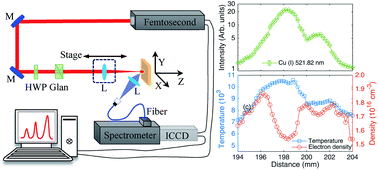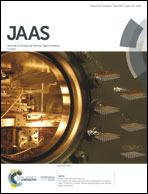Generation of high-temperature and low-density plasma with strong spectral intensity by changing the distance between the focusing lens and target surface in femtosecond laser-induced breakdown spectroscopy
Abstract
To improve the emission intensity of laser-induced breakdown spectroscopy (LIBS), laser-induced plasmas with high temperatures are beneficial to the sensitivity of LIBS. However, the plasmas in typical LIBS also have high densities as the plasma temperature is high. High plasma density will increase line width and self-absorption, resulting in lower spectral resolution. The spectral resolution is very important for LIBS. Higher spectral resolution will improve the accuracy of element determination. To improve the LIBS resolution, the plasma should have both low density and high temperature. In this study, the influence of distance between focusing lens and target surface on femtosecond LIBS was investigated in air. The results indicated that the intensity of spectral lines depended strongly on the distance between the focusing lens and target surface. With the increase of the distance, the line intensity firstly rose, dropped, rose, and then dropped. This could be attributed to Kerr self-focusing effect and plasma defocusing effect during femtosecond laser pulse propagation in air. In addition, plasma temperature and electron density over the distance between the focusing lens and target surface were also calculated by using Boltzmann plot and Stark broadening. The change in the plasma temperature was not consistent with that in the electron density. When the spectral intensity was strongest, the plasma temperature was highest, while the electron density was lowest. Therefore, by changing the distance between the focusing lens and target surface, high-temperature and low-density plasma with strong spectral intensity can be obtained in femtosecond LIBS. This plasma with high temperature and low density can be used to improve the LIBS sensitivity. We hope that our research will be beneficial to improve LIBS resolution and optimize LIBS emission intensity in future femtosecond LIBS.



 Please wait while we load your content...
Please wait while we load your content...